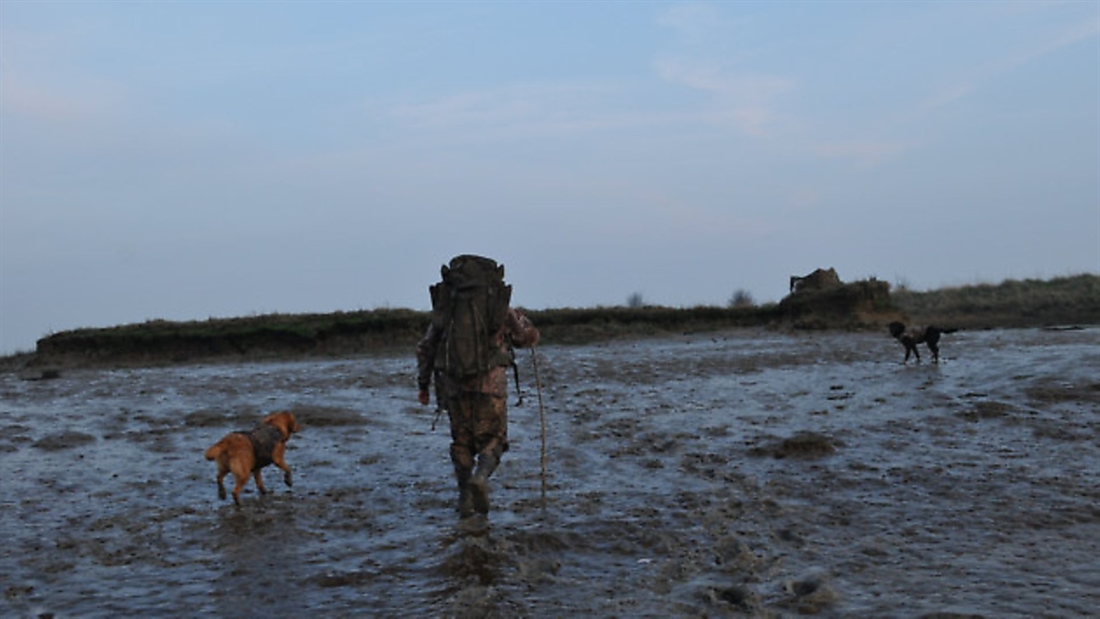The main month

Short days, frosty mornings and freezing nights may not be ideal, but December is the best month for wildfowling, says Alan Jarrett
I always think that, even though the season lasts from 1 September to 20 February, the best of the wildfowling is likely to be before Christmas. There are of course exceptions, with some fine shooting recorded in my diary for the latter two months of the season, but for consistency of sport it is that pre-Christmas period which is likely to yield the best results.
Weather conditions are of course crucial. As I write the rain continues to fall, and this will in all probability lead to the inland marshes being awash. This has the effect of ensuring that the duck are scattered far and wide, and as a result the chances of channelling birds into a favoured hot-spot will be reduced.
It is therefore essential to maximise the opportunities during this period, with December usually a busy wildfowling month for me. Other diary commitments often mean that it is possible to get in a good few trips to the coast, and with some careful planning the month can be the highpoint of the season.
By then the saltmarsh plants will have dropped their seed, providing a banquet for duck, and with luck there will be a few good winds to keep the birds low at flight. Know your marshes and the movements of the birds and December should produce a few birds for the freezer.
During one particular December there was a week in which all the conditions came together perfectly. I had some potentially exciting tide flights planned and was looking forward to things enormously. The first flight was on a favourite stretch of saltmarsh and I planned to take advantage of what for me are favoured conditions. With high water an hour or so before dark there would be opportunity to shoot the tide up as it flooded into the saltmarsh, and then back down again, culminating in the evening flight.
Trudging out with a bag containing decoys and hide-building equipment is an exciting time, and this was to be one of those occasions when things almost lived up to my expectations.
The tide would peak well below the top of the saltings, which would give me the opportunity to build the hide low down and close to the water’s edge. This would allow me to stay close to the decoy pattern and thereby maximise any chance that came my way. My chosen number of eight teal decoys were set in a ragged arc, with the apex no more than 15 yards away. This would ensure that any decoying birds would be well inside the killing zone.
Nothing happened for a long time, but as soon as the first finger of grubby water moved up the adjacent creek, teal began to check out the likelihood of a meal. Soon the decoys were afloat and the odd bird came close enough for a shot.
Over high water a few wigeon put in an appearance, so by the time the light was drawing in a nice bag of half-a-dozen teal and wigeon had been put together. The one disappointment was the evening flight, with nothing coming near my position.
Nevertheless, it was a decent December bag, and my diary revealed another similar trip scheduled for a couple of days later – albeit when the high tide coincided with dusk. Sport was similar on the second occasion, which meant that a dozen duck from two tide flights was deemed a success.
The ability to be adaptable is an essential pre-requisite for successful wildfowling. A gale arrived a couple of days later, so I abandoned further thoughts of tide flighting in favour of a day out on a different estuary.
The wind and rain made the outbound trip in darkness a slog, but once eventually tucked into a likely creek awaiting the first slivers of dawn, the toil was quickly forgotten. The wind raged overhead and the prospects of a good flight made me long for the coming dawn.
When the light began to break every hope was realised as duck began to pour through, many of which were barely above ground level. There were teal and wigeon in the main, but also a sprinkling of mallard and pintail.
The one thing all species had in common was their difficulty in beating through against the wind. In between the squalls of rain the wind was at gale force, and when the squalls did come the wind picked up further still, making it one of the wildest mornings on the shore that I can recall. This time the bag moved quickly into double figures, and there was complete vindication of my decision to alter my plans in response to the changing weather conditions.
Much later in the day, when most of the rain had cleared through, the wind began to ease. By early afternoon and with a rucksack full to overflowing, the flight had finally petered out and it was time to head for home.
On the way back I elected to stop off at a favourite creek for evening flight. It was a crimson sunset and a real pleasure to sit for a long time watching the day die away. No further duck came my way, but at such times it almost seems a shame to disturb the tranquillity with a shot. It was turning into another successful and enjoyable December.
Alan Jarrett





